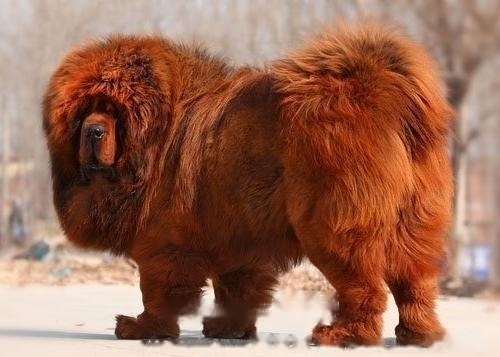We all know that there is a unique ferocious dog breed in China Tibetan Mastiff. Its tall and fierce appearance is also recognized as the oldest rare dog breed in the world. In ancient stories and legends, the Tibetan Mastiff has always been regarded myth. Many people keep Tibetan mastiffs as pets, but few people know about the historical development and character of Tibetan mastiffs. Besides the history and fierce and sturdy characters listed above, what else is there?

Tibetan Mastiff
1. History of Tibetan Mastiff
The Tibetan Mastiff has a history of thousands of years. As the oldest dog breed, it is recorded in the earliest historical book Shangshu in China. Used as guard dogs. In the records of Chinese historical records, the nomadic people (Qiang people) at that time dealt with the attacks and threats of other beasts by domesticating the wild dogs that followed the herdsmen. They guard the tents, guard the cattle and sheep, and become the faithful companions of the herdsmen. This should be the prototype of the earliest Tibetan mastiff.
Under the extremely harsh living environment on the Qinghai-Tibet Plateau, the Tibetan Mastiff has also undergone the natural selection of natural selection. In order to leave a stronger breed, the herdsmen choose some individuals who are strong, ferocious and loyal, and good at herding animals to reproduce, thus maintaining the pure blood of the Tibetan Mastiff. Later, during the reign of Emperor Qianlong of the Qing Dynasty, Fu Qing, the head of the Qing government stationed in Tibet, who accompanied the Panchen Lama eastward, brought a Tibetan mastiff to Beijing, and the court and the public were amazed by the heroic appearance and momentum of the dog. Italian painter Lang Shining obeyed Qianlong's will and painted the last piece of Cangya in Ten Dogs, which represented this Tibetan mastiff.
However, whether in modern or modern times, it was the Westerners who first recognized its value and promoted it. At the beginning of the 18th century, the British first began to cultivate the Tibetan Mastiff and established a pedigree file. In 1947, the first Tibetan Mastiff was brought to the United States. In 1973, in order to better protect, understand and breed this endangered dog breed, the United States established the American Tibetan Mastiff Conservation Association, and began to protect, research and shape the Tibetan Mastiff.
2. Signs of the Tibetan Mastiff
Marco Polo once gave a detailed description of the Tibetan Mastiff in his travelogue, he described the Tibetan Mastiff as as tall as a dog. The donkey roars like a lion and is extremely ferocious. He was the first Westerner to put the Tibetan mastiff into writing.
Tibetan Mastiffs vary in appearance due to different living areas. Usually, the head and neck are high and the neck is powerful, the proportions are appropriate, the muscles are developed, strong like a lion, the body is large, about 120 cm in length, the body hair is thick and thick, the outer coat is not too long, the undercoat is thick, and it likes cold and avoids heat. The best Tibetan Mastiff comes from Nagqu region of Tibet. The mane is dense, the chest is broad, and the eyes are piercing, reserved and deep. Tibetan Mastiffs from Qinghai area have almost no mane, and the hair on their bodies is relatively short, but their body size is larger, but their character is not as fierce and calm as ordinary Tibetan Mastiffs.
3. Character of the Tibetan Mastiff
The real Tibetan Mastiff has a kingly demeanor that is not angry and self-proud. The harsh living environment of the plateau not only created the Tibetan mastiff's strong willpower and contempt for everything, but also endowed the Tibetan mastiff with the temperament of the king. It is lonely and arrogant, mighty and brave, noble and elegant, loyal and dedicated character, and its quality of resistance to hunger, cold and all tempering is also its most attractive place. Therefore, the Tibetan Mastiff usually protects the territory, protects food, is good at attack, is powerful and ferocious, and still has wild nature, which makes people daunting, and has strong hostility to strangers, but is extremely affectionate to the owner.
![[Dog Training 5] The training method of pet dog dining etiquette](/static/img/12192/12192_1.jpg)




